We’re getting ever so close to 2024 and the Dungeons & Dragons 5th Edition refresh. As the last release of 2023, The Book of Many Things and The Deck of Many Things has a lot on its shoulders and it absolutely nails the execution.
The Book of Many Things and the accompanying Deck of Many Things are on the surface exactly what you’d expect. A resource for players wanting to integrate the magical item, The Deck of Many Things, into their home game, but it goes so much further.
What’s in The Deck of Many Things Box?
The Deck of Many Things has been around just as long as Dungeons & Dragons has, and it was even mentioned in the original 5th Edition Dungeon Master’s Guide albeit with very little description.
Purchasing The Deck of Many Things provides DMs with a 192-page sourcebook, The Book of Many Things, a physical collection of 66 cards representing The Deck of Many Things as well as the Deck of Many More Things, and an 80-page reference book to teach you all about each card, The Deck of Many Things Card Reference Guide.
On its surface The Book of Many Things and The Deck of Many Things are ways to introduce to players the Deck of Many, giving an in-universe history as well as its history of publication within Dungeons & Dragons.
What players will actually find when they start leafing through the Book of Many’s 22 chapters is a wealth of knowledge on how to use your new Deck of Many Things to improve your Dungeons & Dragons games from a narrative standpoint, or mechanically without even having the deck appear in your game.
The Book of Many Things provides context and deeper insight
Any piece of information you’re after in regards to The Deck of Many Things, The Deck of Many More Things, or the expanded uses of the deck can be found in this tome.
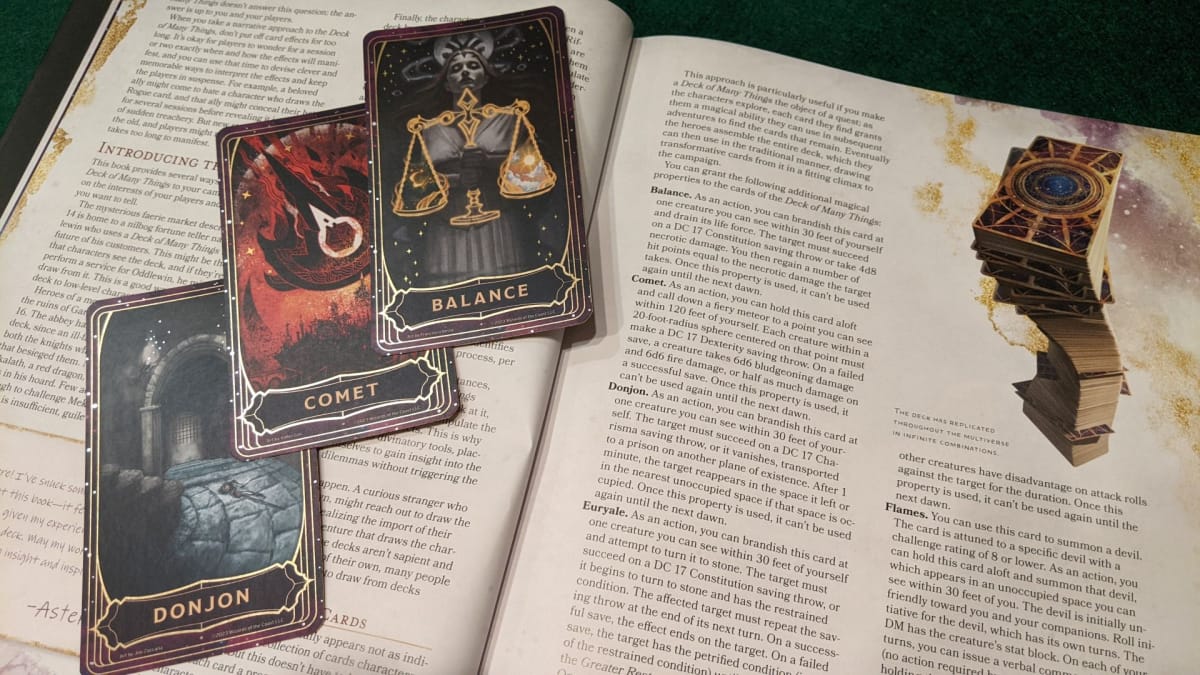
After a brief introduction to the history of The Deck of Many Things, you’ll reach a second table of contents explaining each chapter you’ll discover in the book and what relevant information you’ll find there. These groupings include the Dungeon Master Toolbox, Character Creation Options, The Celestial Suite, Adventure Locations, and Adversaries and Rivals.
These clearly laid out sections are a lot of fun to read and understand. You’ll know if you want to gather information on new traps and riddles that the Puzzle card will be your friend whereas the Key chapter shows you how to introduce and use the deck in your game.
Not every chapter completely relates to the card the chapter is named after, but you’ve got to appreciate the effort.
You’ll get the information on how to use the Deck itself, and what each card does by the time you reach page 15. Everything else adds layers upon layers of depth to the Deck and it’s many uses.
The Deck of Many Things will replace your roll tables
My favorite of the DM chapters is Balance. In this chapter examples are given for how to use cards from the deck to foster creativity, or how to use it in the place of a roll table. Not all of these use The Deck of Many Things, some examples use a regular playing deck but it would be easy enough to substitute.
With this book you’ll get tips on how to create a new Inspiration system for your players, generate random events and rewards when travelling, or create a list of random encounters to pull from. You can also use it as a
I was incredibly impressed with the use of The Deck of Many Things as a way to create new encounters while the party is travelling. It does require some quick thinking from the part of the DM but could lead to more robust experiences.
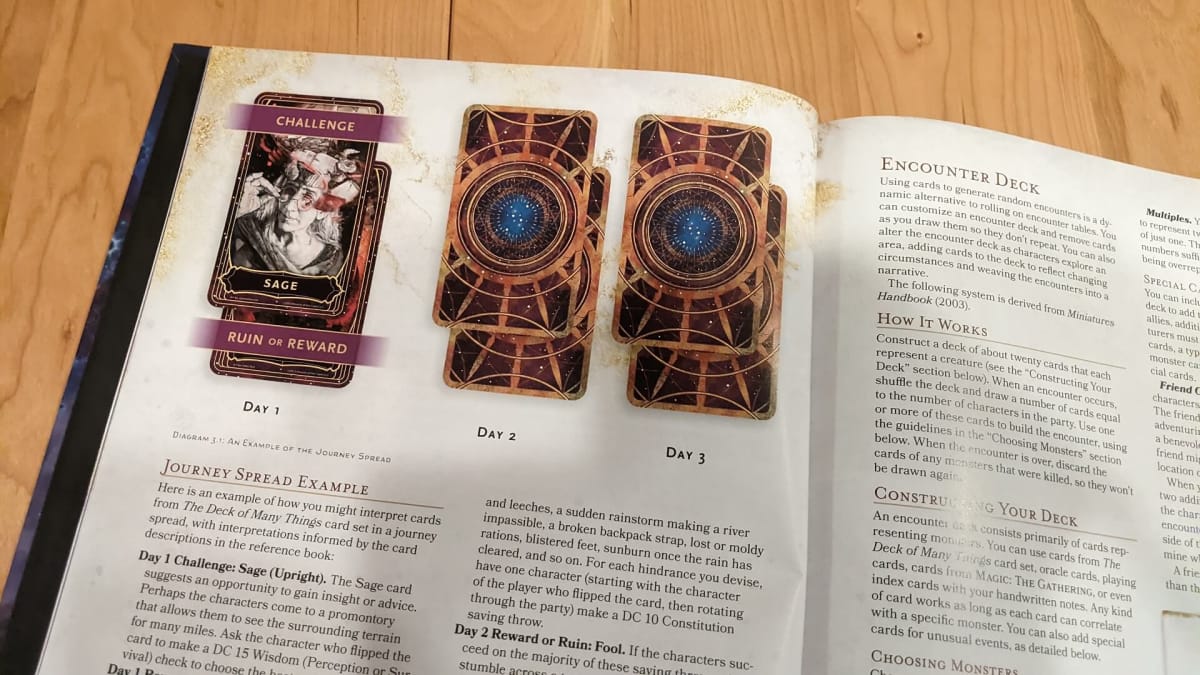
In creating a Journey Spread you’ll have two cards from the deck, one as the Challenge and another as the Risk or Reward. The Risk or Reward could depend on whether the party successfully faces the challenge, or if the card is Upright or Reversed.
Pulling Donjon as a Challenge could mean the party happens across an excentric zoo as they travel seeing the Ring Master aggressively put a manticore through training. The Party might avoid the situation entirely or get involved.
If the Risk/Reward card is Gem then by scaring off the Ring Master his treasure might be their reward, however if Gem is Reversed then the Ring Master might be carrying around a Mimic Treasure Chest that is an additional risk for the party to fight.
I love the idea of stepping away from a roll table of set encounters or creatures and using the deck. Not only can this add to the fun of being a table prop, but also lets you use the name and imagery of a card to spark inspiration. I imagine different cards with interesting imagery such as those in Dixit could also provide a similar purpose.
You can stack the deck in whatever way that makes sense for your travels – if you’re in the middle of a city then a cavern card might not hold too much relevance – Alternatively, you can trust your ability to improvise or use the Card Reference guide to provide more context for how a card could be used.
How The Deck of Many Things can influence a character in D&D 5e
Moving into the character creation chapters Rogue will give the DM ideas of “magical items suited for Bards, Rangers, Rogues, and other characters who priortize skills”. Sage does something similar for spellcasting characters, while Fates will describe a background of those who have risen to power using the cards and those who have had everything taken from them.
Characters with the Spellcasting Feature can also pick up the Cartomancer feat allowing a deck of cards to become their spellcasting focus. On top of that there are also a few card focused spells such as the 2nd level conjuration Spray of Cards, which works as a cone-shaped blast of cards that on failing a dex save the targets will take 2d10 force damage.
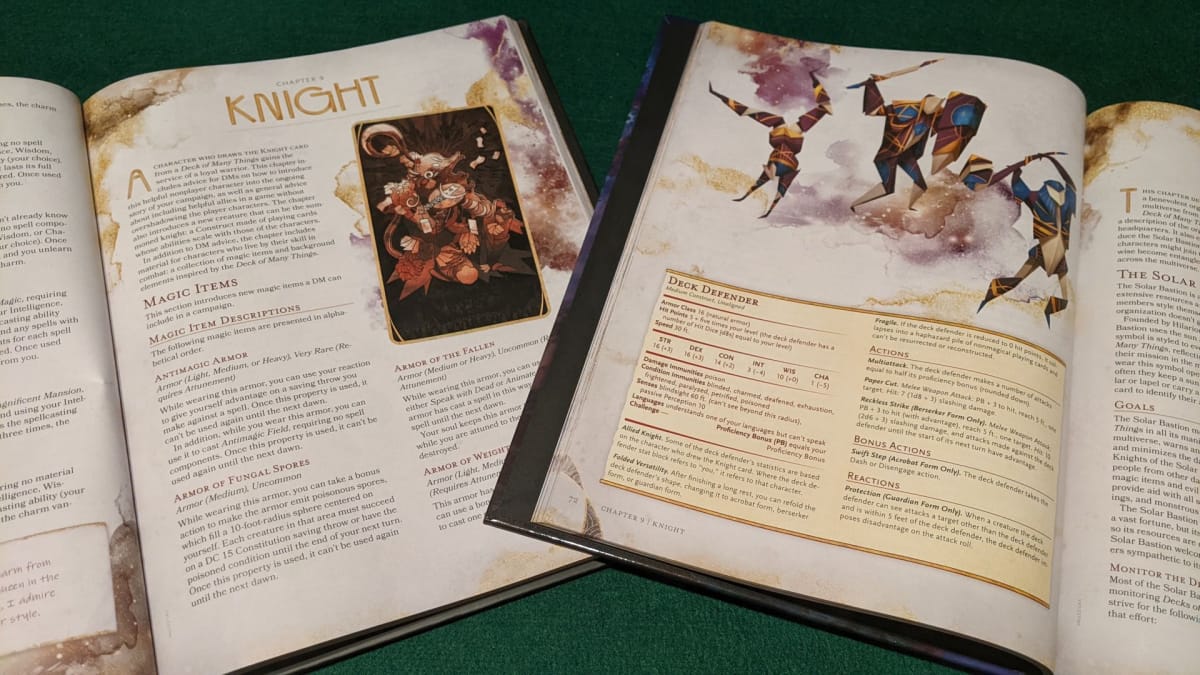
Another new character option introduced is The Sky of Many Things. In simplest terms this is Astrology for the world of Dungeons & Dragons where characters can be born under different signs. These 12 Zodiac Signs will all have a nickname and prominence.
Depending on what sign you were born under it could help inform your character on their birthstone, Birthcreature, and Birth Color, as well as a suggested Ability Score. Along with the ability to use The Deck of Many Things as an Oracle Deck and the unignorable powers that Spell Gems have this rounds out a whole new way to play a character.
DM are also given tips on how to introduce this astrology further into their world with Zodiac Phenomena, events that can occur as seasons change or while a zodiac inclined character is using a Divination spell.
What is The Deck of Many More Things?
The Sage chapter is also where the effect of The Deck of Many More Things resides. These are the additional 44 cards created specifically for this release. Some of these cards were created in response to the shortcomings of the original deck.
One example of this is the Staff card and Shield card having a Rare or Rarer rod/staff/wand or magical armor respectively appear that the player can use. Interestingly while these were said to balance out the original Key, which would create a Rare or Rarer Magical Weapon, the description for the Key now instead gives the player access to five silent Knock spells a day.
The Deck of Many Things, alongside the Deck of Many More Things, can be built in a variety of configurations to be inserted into your game. Some pre-made decks have been included to help you balance out how difficult or easy the contents might be for your party.
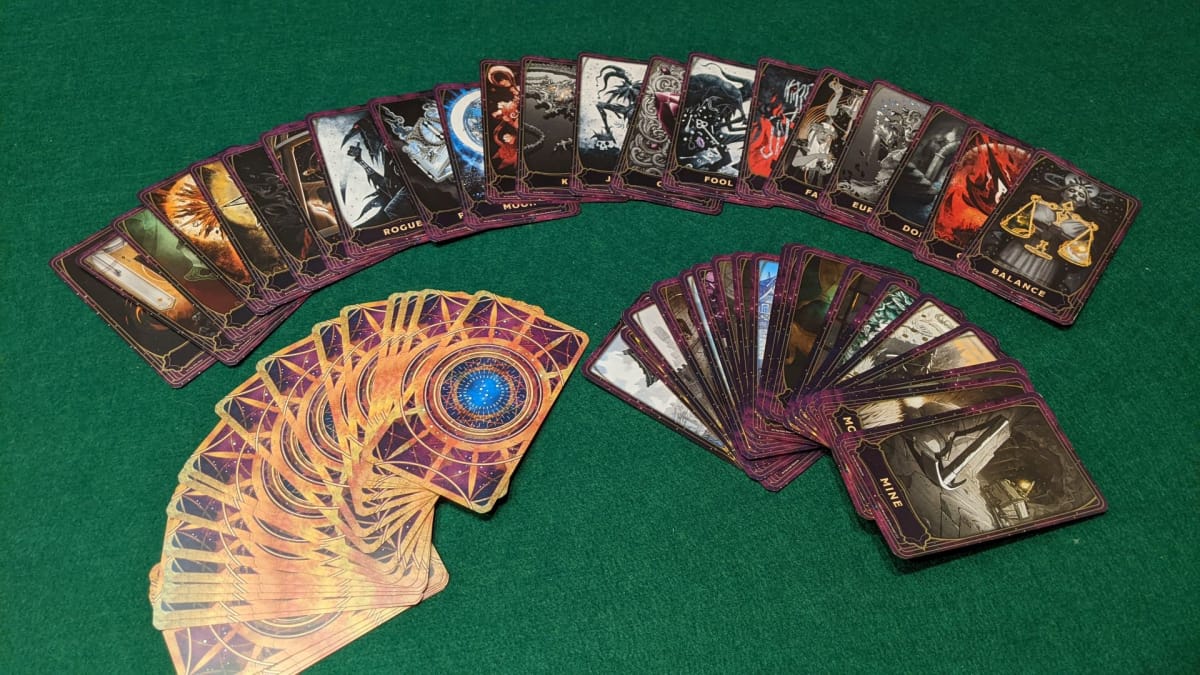
The Starter Deck is used for low-level characters, a Roleplaying Focused Deck might be good for parties that enjoy the exploration and communication of the world, or the Deck of Horrors can be thrown into a party when you’re ready for them to really be thrown in the deep end.
A number of other magical decks have been added into the game. One that creates mundane items, one for hopping between dimensions (could be good for Spelljammer or Planescape), and one for Minor Wonders. A “baby’s first Deck of Many Things” that has similar effects, but ones that have less of an impact on your overall campaign.
Fill your world with The Deck of Many Things
On top of ways for the DM to influence events in the world and players to roleplay, this Source Book also expands on NPCs and locations that are related to The Deck of Many Things.
The original Donjon card effect simply read as follows:
You disappear and become entombed in a state of suspended animation in an extradimensional sphere. Everything you were wearing and carrying stays behind in the space you occupied when you disappeared. You remain imprisoned until you are found and removed from the sphere. You can’t be located by any divination magic, but a wish spell can reveal the location of your prison. You draw no more cards.
Now the Donjon card gives ideas for what the player of the trapped character could do, how a party might go about finding the dungeon, and even includes a full layout for this extradimensional prison and what you’ll find in it.
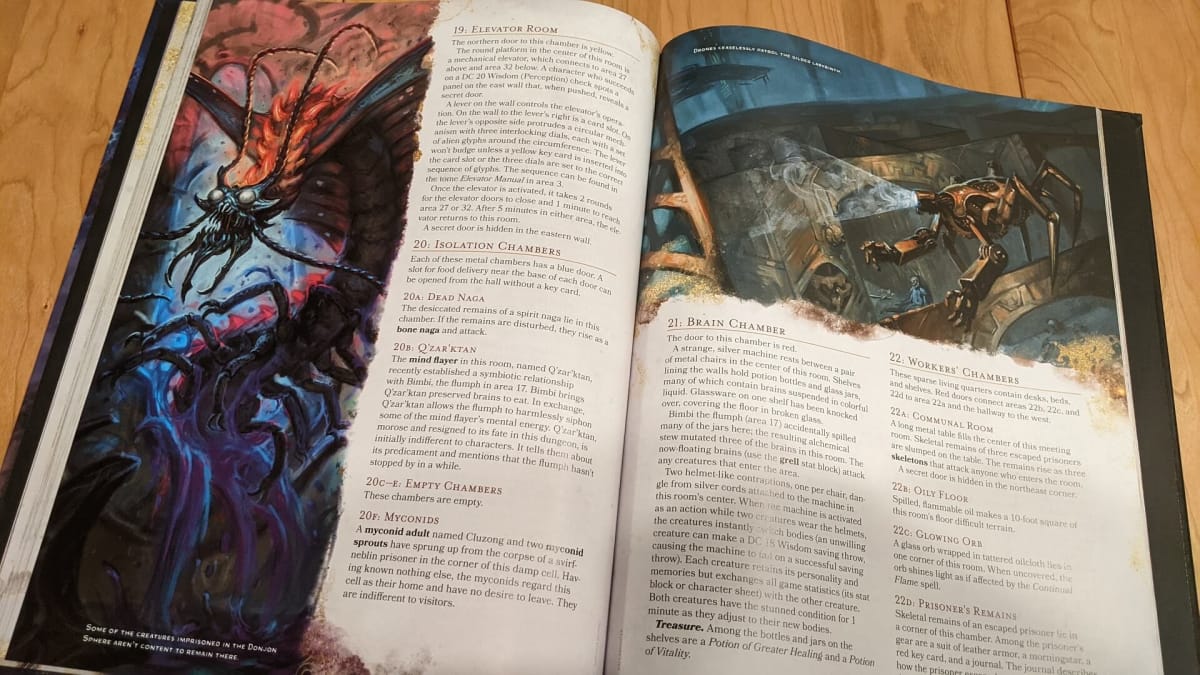
Some other excellent additions are the different factions. A holy order representative of the Sun card, a lycanthropic cult for the Moon card, and even a doomsday cult for the Comet Card that believe finding the original Deck of Many Things to bring about the end of the world.
Create your next D&D One-Shot with Adventure Spread
This whole time we’ve been talking about all of the different options available in The Book of Many Things but haven’t spoken about the incredible uses of The Deck of Many Things Card Reference Book. Adventure Spread.
Using cards drawn from the Deck of Many Things (and the Deck of Many More Things) you can lay them out in a way to create an adventure. Using cards you can determine where the party meets and what the inciting incident is, as well as what journey they need to take and what challenges they’ll face.
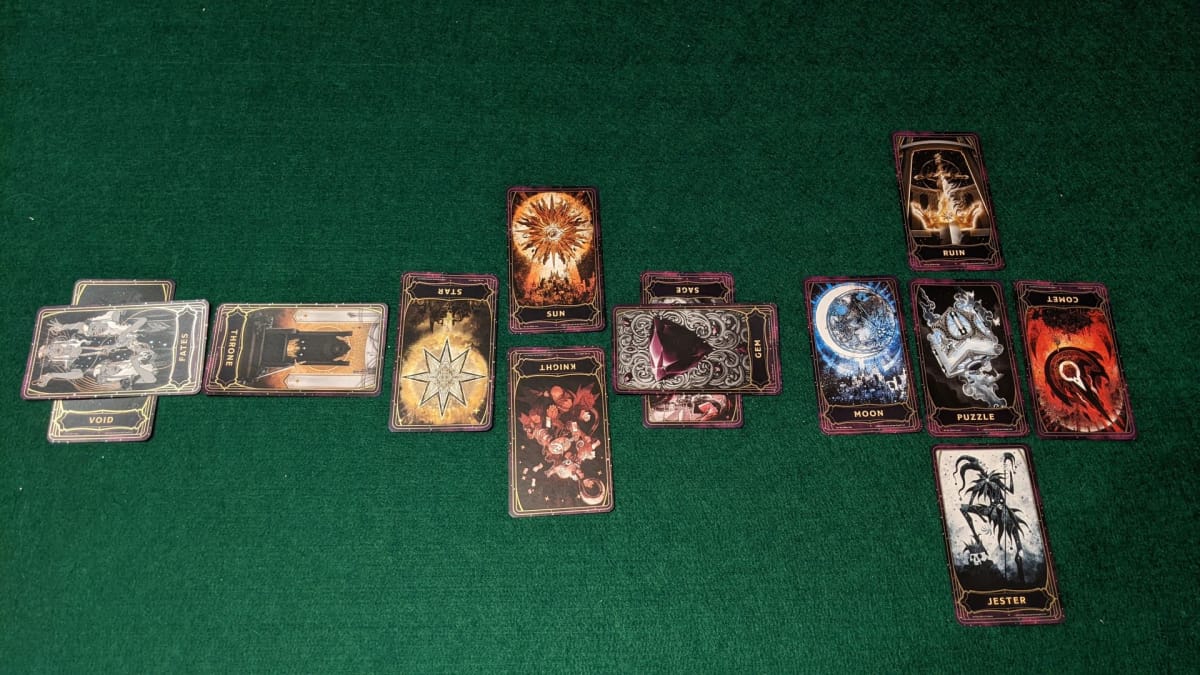
Within The Deck of Many Things Reference Book each card includes the embodiment of a card, this is it’s general theme. As well as a number of meanings for it to be Upright or Reversed. These meanings could be a Person, Creature or Trap, Place, Treasure, or Situation.
Depending on where the card appears in your Adventure Spread will determine what role it will play. The Aberration card appearing Upright in Place could mean that the place has distorted physics or gravity, a Reversed Aberration in Place however could be where nature has overgrown a long past corruption.
That same Upright Aberration card as a Person could be someone who believes in a distorted view of reality “perhaps a cultist or a warlock of the Great Old One.”
I absolutely love the idea behind this. It’s not strict enough that you’ll even feel stuck with an idea but is a good way to prompt your imagination again to create a One-Shot that you’ll never need to repeat again.
Should You Buy The Deck of Many Things?
There have been a number of Source Books that have very specific focuses. Planescape is a great book for a Planescape adventure, space adventures make Spelljammer a must, but this is one of the first Source Books in a while that I’d recommend to anyone.
The Cards and information in the book can enhance every aspect of your game. Roleplay, mechanics, and even the solitary planning stage for a DM can be improved with the prompting of these cards.
If you’re confident in your improv abilities it can even help you remove the need for pre-planning adventures or let you run an on-the-fly one-shot at the drop of a hat.
The Deck of Many Things Review | Final Thoughts
I was absolutely enamored reading through this book. The many uses for the Deck of Many Things or a regular deck of cards that designers Jason Tondro, Makenzie De Armas, and the team The Book of Many Things is awe-inspiring.
I’m already so looking forward to introducing Astrology to a number of my players, running randomized encounters by pulling cards and consulting the Reference Book, and crafting random one-shots for friends and family that aren’t tied to any major campaigns.
For a DM with a long-running party everything that this book contains offers a chance to level up your game, for a group of players who don’t have the time to run a long-form campaign this offers a chance to hit the ground running.
The copy of The Deck of Many Things used to produce this review was provided by the Publisher. All photos were taken by the reviewer over the course of the review.